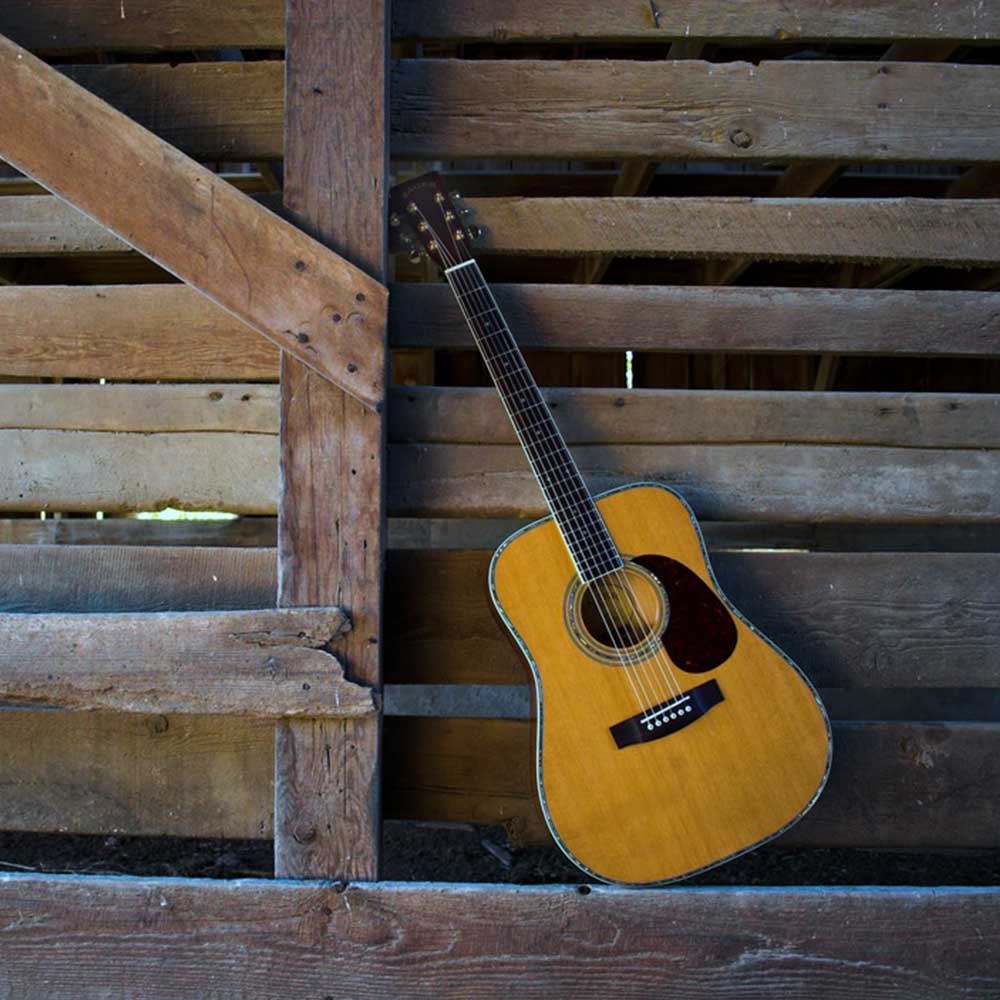Article: Lead Guitar vs Rhythm Guitar: Know the Difference

Lead Guitar vs Rhythm Guitar: Know the Difference
When it comes to lead versus rhythm guitar, think of it this way: rhythm players mainly focus on chords, while lead guitarists focus on riffs and solos. Lead guitarists also incorporate elements of the song's vocals into their playing, emphasizing the melody.
Understanding the distinctions between these two positions that guitarists can fill confounds many people. So that you can choose which role you wish to play, let's break it down and talk about what each role entails.
What Is a Lead Guitarist?
A lead guitarist is an instrumentalist who typically plays the melody line or solos and accompanies the other instruments and vocalists. This role requires skills, including:
- Improvising creative guitar parts on top of the backing track - often in real-time.
- Adept at playing with different scales and modes to produce interesting musical ideas.
Lead guitarists normally use vibrato, hammer-ons/pull-offs, string bends, and other methods to create sound. Renowned lead guitarists include Stevie Ray Vaughan, Eddie Van Halen, Jeff Beck, and Jimi Hendrix.
How to Play Lead Guitar
Lead guitar playing calls for top-notch talent and dedication. As a lead guitarist, you must be proficient in techniques including:
- String bending
- Vibrato
- Trade picking
- Tapping to create your particular sound
You'll additionally need to be comfortable using various scales and modes to create thrilling melodies, riffs, and solos.
At first, learning to solo can be intimidating, but practice makes perfect. Recognizing notes on the fretboard by ear can take some practice, but it's a crucial talent if you want to play lead guitar well.
What Is a Rhythm Guitarist?
A rhythm guitarist is an instrumentalist who performs in a band and supports other musicians and vocalists. Unlike lead guitarists, rhythm guitarists concentrate more on strumming patterns and chord progressions and maintaining a constant "pulse" for the music.
They must have an excellent sense of timing to keep the groove going and everything in sync. Additionally, they need to be able to confidently play different rhythms, including eighth, triplets, and sixteenth notes. Famous rhythm guitarists include John Marr, Jimmy Page, Keith Richards, and Angus Young.
How to Play Rhythm Guitar
Rhythm guitar playing takes dedication and practice. You should also improve your strumming method and grasp the capability to confidently and appropriately play a variety of rhythms in case you want to be a successful rhythm guitarist.
Additionally, you must understand basic music theory principles such as scales and chord progressions. A good ear for music is also necessary; being able to hear different intervals in chords or melodies will allow you to create interesting grooves more easily.
Lastly, having a strong sense of timing is key—you must be able to keep the groove going while playing with other musicians.
Difference Between Lead and Rhythm Guitarist
A rhythm guitarist is an instrumentalist who accompanies the other musicians and vocalists in a band or ensemble. They focus more on:
- Strumming patterns
- Chord progressions
- Creating a steady "pulse" for the music
To be successful as a rhythm guitarist, you must have an excellent sense of timing and an understanding of basic music theory principles such as scales and chord progressions.
Additionally, it's important to play different rhythms confidently, including playing eighth notes, triplets, and sixteenth notes accurately. Notable rhythm guitarists include John Marr, Jimmy Page, Keith Richards, and Angus Young.
What Should I Be Playing?
When deciding whether to become a lead or rhythm guitarist, there are several things to consider. Firstly, it's important to think about your personal preference and what style of music you prefer playing. Do you want to take the lead in creating solos and melodies? Or do you feel more comfortable providing accompaniment and keeping the groove going?
Secondly, your skill level will impact the type of guitar playing right for you. If you're starting, learning how to play chords and progressions accurately might be more suitable than attempting difficult solos.
Lastly, it's important to consider the band's needs - if they require a strong soloist who can take charge, then being a lead guitarist may be a better fit. Ultimately, it comes down to personal preference and the direction you want to play.
Learn How to Play Lead or Rhythm Guitar with Zager
Lead guitarists are instrumentalists who take the lead in creating solos and melodies while rhythm guitarists are instrumentalists who accompany other musicians and vocalists in a band or ensemble.
The difference between lead and rhythm guitarists lies in their role in a band or ensemble. Lead guitarists take the forefront while rhythm guitarists provide accompaniment.
Ultimately, the type of guitarist you become depends on your preference and skill level - ask yourself what you prefer playing, how comfortable you are with difficult solos, and what the band requires.
Zager Guitar has all the tools you need if you want to learn how to play either lead or rhythm guitar. Check out our range of guitars for every level and skill set, as well as our comprehensive guitar lesson library to help you master the instrument. With Zager Guitar, you can become an excellent lead or rhythm guitarist in no time.













































